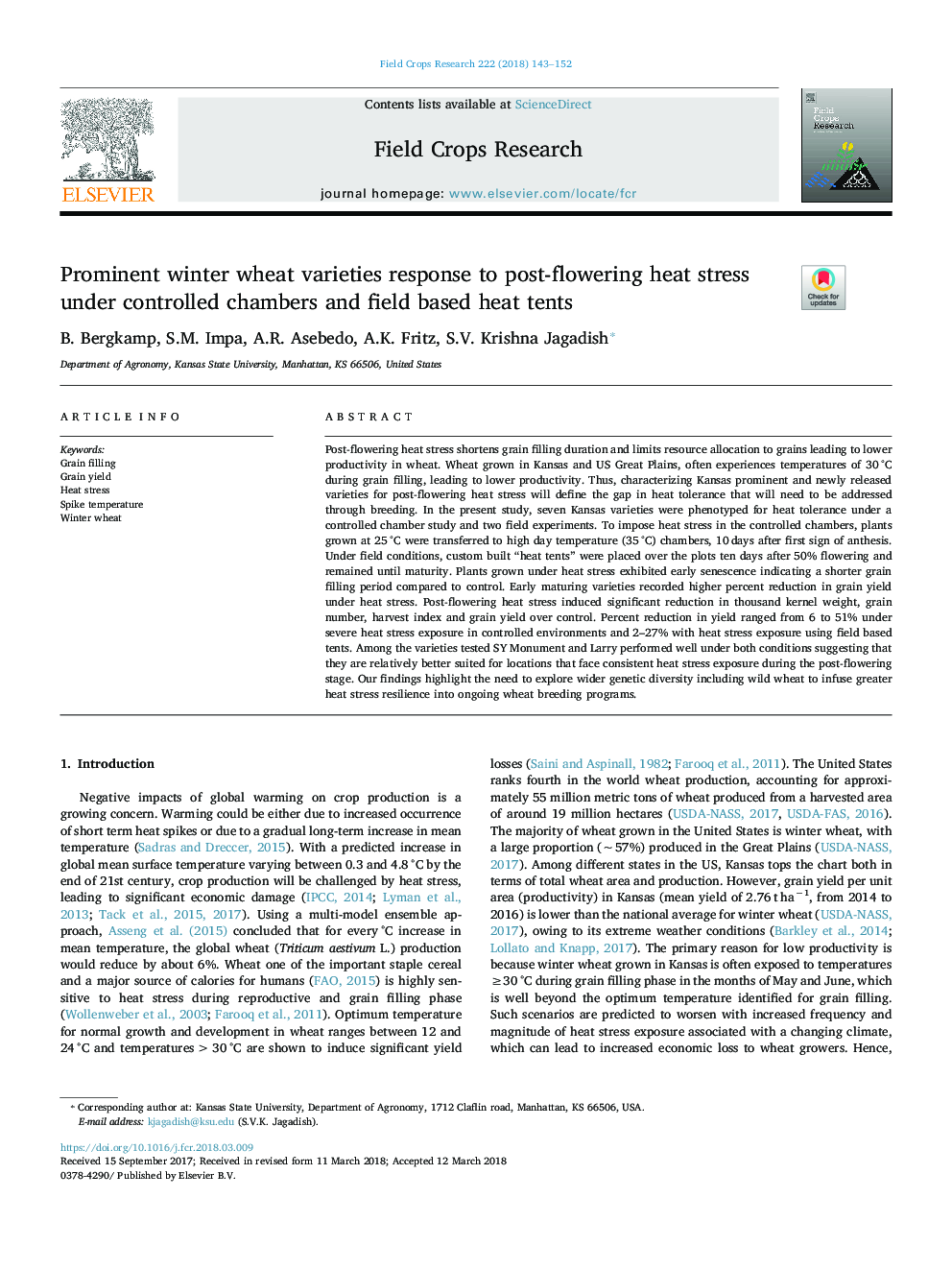| کد مقاله | کد نشریه | سال انتشار | مقاله انگلیسی | نسخه تمام متن |
|---|---|---|---|---|
| 8879192 | 1624641 | 2018 | 10 صفحه PDF | دانلود رایگان |
عنوان انگلیسی مقاله ISI
Prominent winter wheat varieties response to post-flowering heat stress under controlled chambers and field based heat tents
ترجمه فارسی عنوان
واکنش های متنوعی از واکنش های گندم زمستانه به استرس گرما بعد از گلدهی در اتاق های کنترل شده و چادرهای گرمای
دانلود مقاله + سفارش ترجمه
دانلود مقاله ISI انگلیسی
رایگان برای ایرانیان
کلمات کلیدی
پر کردن دانه، عملکرد دانه، استرس گرما، دمای سنبله، گندم زمستانه،
موضوعات مرتبط
علوم زیستی و بیوفناوری
علوم کشاورزی و بیولوژیک
علوم زراعت و اصلاح نباتات
چکیده انگلیسی
Post-flowering heat stress shortens grain filling duration and limits resource allocation to grains leading to lower productivity in wheat. Wheat grown in Kansas and US Great Plains, often experiences temperatures of 30â¯Â°C during grain filling, leading to lower productivity. Thus, characterizing Kansas prominent and newly released varieties for post-flowering heat stress will define the gap in heat tolerance that will need to be addressed through breeding. In the present study, seven Kansas varieties were phenotyped for heat tolerance under a controlled chamber study and two field experiments. To impose heat stress in the controlled chambers, plants grown at 25â¯Â°C were transferred to high day temperature (35â¯Â°C) chambers, 10â¯days after first sign of anthesis. Under field conditions, custom built “heat tents” were placed over the plots ten days after 50% flowering and remained until maturity. Plants grown under heat stress exhibited early senescence indicating a shorter grain filling period compared to control. Early maturing varieties recorded higher percent reduction in grain yield under heat stress. Post-flowering heat stress induced significant reduction in thousand kernel weight, grain number, harvest index and grain yield over control. Percent reduction in yield ranged from 6 to 51% under severe heat stress exposure in controlled environments and 2-27% with heat stress exposure using field based tents. Among the varieties tested SY Monument and Larry performed well under both conditions suggesting that they are relatively better suited for locations that face consistent heat stress exposure during the post-flowering stage. Our findings highlight the need to explore wider genetic diversity including wild wheat to infuse greater heat stress resilience into ongoing wheat breeding programs.
ناشر
Database: Elsevier - ScienceDirect (ساینس دایرکت)
Journal: Field Crops Research - Volume 222, 1 June 2018, Pages 143-152
Journal: Field Crops Research - Volume 222, 1 June 2018, Pages 143-152
نویسندگان
B. Bergkamp, S.M. Impa, A.R. Asebedo, A.K. Fritz, S.V. Krishna Jagadish,
